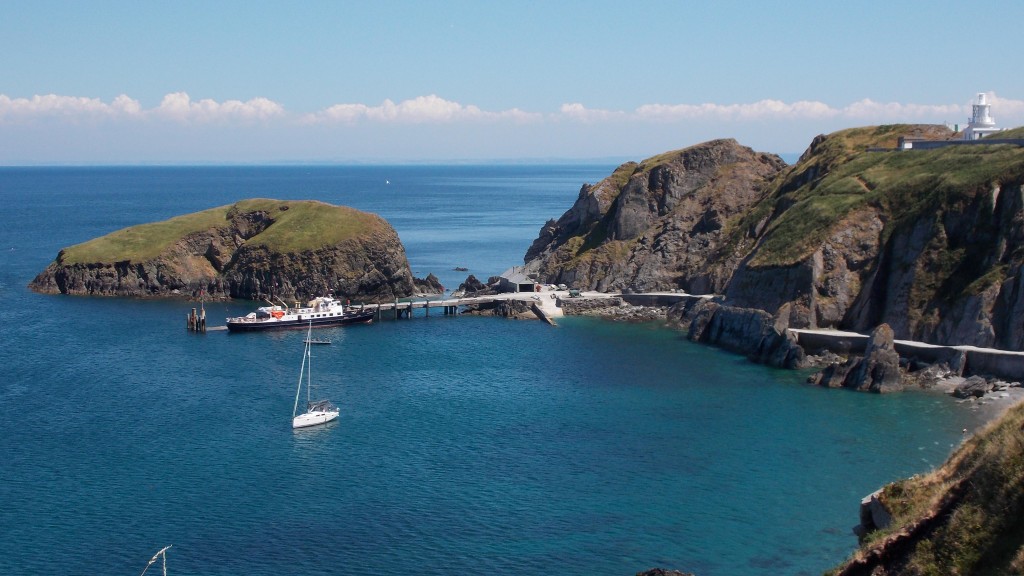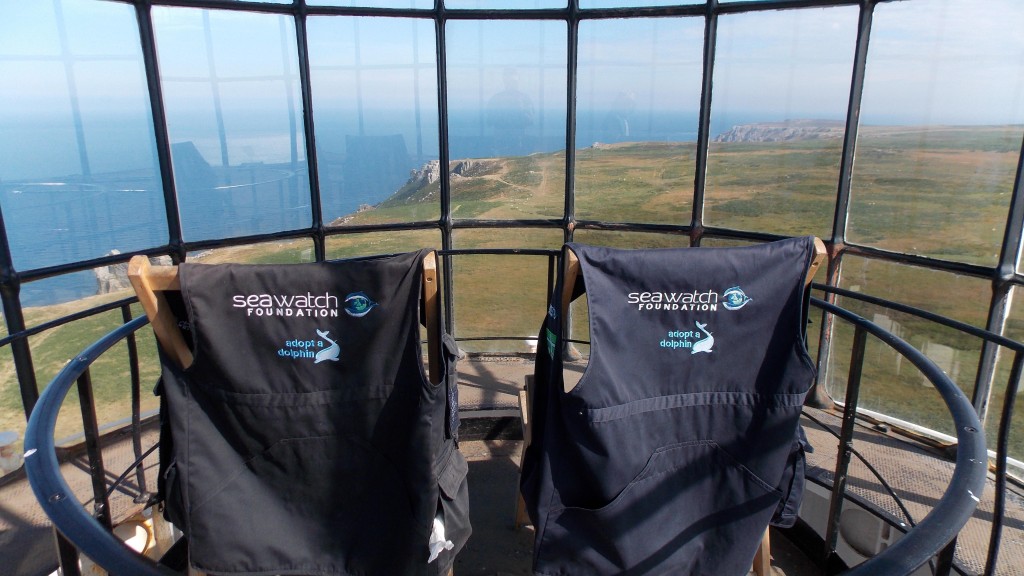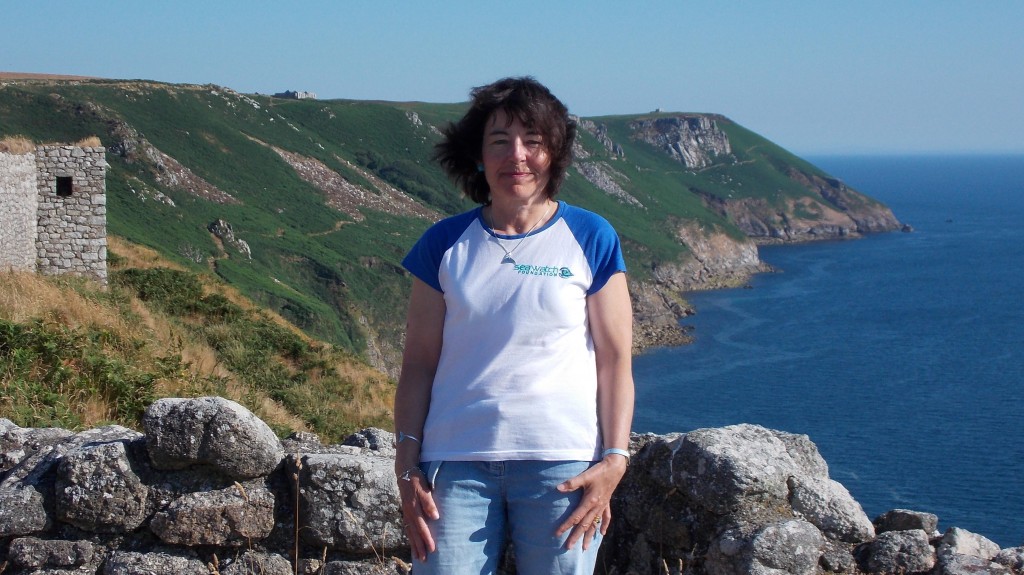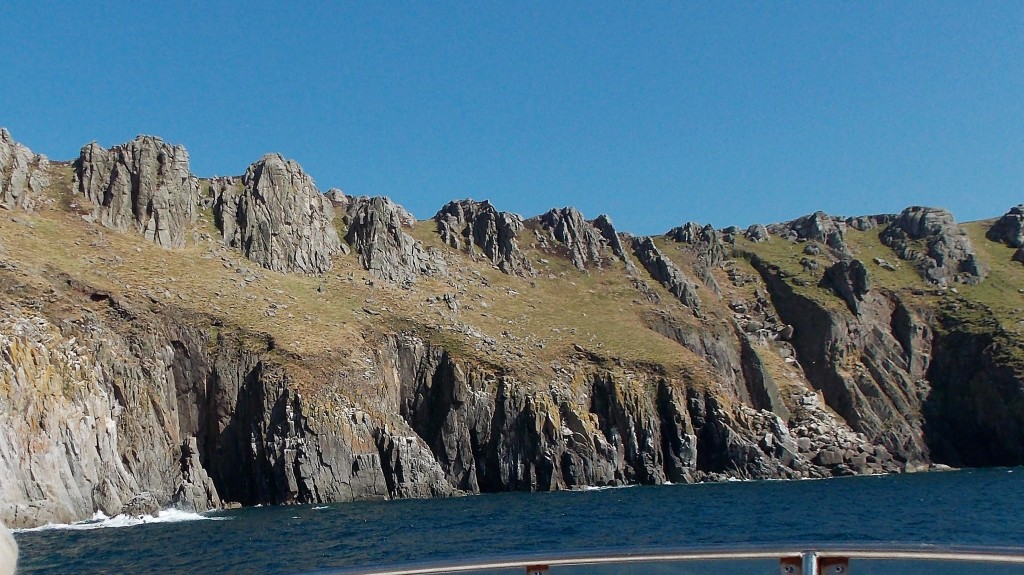We have had a lovely chat with Sharron and Chris Blackmore, our Regional Coordinators for North Devon, who have spent the past two weeks on Lundy island collecting cetacean data for Sea Watch and the Lundy Field Society. This is their story!
We’ve just returned from a fantastic fortnight on our favourite island, Lundy, our 12th consecutive year. It’s a little piece of Heaven, literally, as it was once owned by the Heaven family over 100 years ago. We spent the fortnight as we usually do, carrying out cetacean watches for Sea Watch and the Lundy wildlife warden, walking the island with a constant eye on the sea and recording any other interesting wildlife sightings for reporting to the Lundy Field Society of which we are members. It’s also a wonderful place to just stop, look and listen. No cars, no television, no newspapers and a ban on electronic devices in the pub! With the incredible summer we’ve been having, this year’s glorious stay was particularly memorable as Lundy is also famous for its fogs which can envelope the top of the island and weather can change very quickly even in the summer.
Lundy is a small, rugged lump of granite, 400 feet high, 3.5 miles long by 0.5 mile wide, just a few miles off the North Devon coast. To the east is the Bristol Channel and to the west the Atlantic where the next landfall is America! The name Lundy is derived from a Norse word meaning Puffin Island and these comical little sea parrots are indeed making a massive comeback on the island since the eradication, 10 years ago, of accidentally introduced shipboard black and brown rats. Breeding pairs of puffins have risen from just a handful to hundreds in those few short years. The numbers of breeding manx shearwaters, also burrow nesters, has also increased dramatically.
Wildlife abounds on and around the island and due to the numerous shipwrecks and amazing undersea marine life in this Marine Conservation Zone it’s a magnet for divers. It’s rugged coastline to the west also makes it a favoured destination for climbers.
We’re drawn to the island by the presence of cetaceans including harbour porpoise, common dolphin and the occasional minke whale. Grey seals appear everywhere around the island and breed annually and in the summer months basking sharks and ocean sunfish can also be seen. Other wildlife abounds on the island and it has its own herd of secretive sika deer as well as feral goats, soay sheep, Lundy ponies, highland cattle, rabbits and the tiny pygmy shrew. There is also a working farm which provides island produce.
Resident and migrating birds are everywhere and guillemots, razorbills, kittiwakes, fulmars and the various gull species all regularly breed on the island’s cliffs along with ravens and peregrine falcons.
Lundy is owned by the National Trust and administered by the Landmark Trust who have a staff of approximately 26 people living and working on the island which caters for over 100 staying visitors as well as up to 270 visiting day trippers a few times a week through the summer. There is one church, built by the Heavens, one store and one pub. There are 23 historical holiday properties as well as a camping field. The Castle built in 1244 provides 4 cottages, including the one we have stayed in for the last 11 years which was once the cable room and post office and is “tacked on” to the side of the castle and called, pretty obviously, Castle Cottage! It has probably one of the best views of any of the properties and looks down, through a large picture window onto the South Light, jetty and Landing Bay.
Surprisingly for such a small island, Lundy actually has 3 lighthouses: North Light and South Light which are still operational with Trinity House, and Old Light, which was the first lighthouse built on the island and is situated at the island’s highest point.
Unfortunately, it soon became apparent that Lundy’s famous fogs were obscuring the light and it was switched off in favour of 2 cannons, mounted low down on the west side which would fire alternately in thick fog every few minutes to warn off shipping! Theses cannons and associated buildings can still be visited and the cannons were being renovated during our stay. A lot of the old Lundy buildings and vantage points have provided us with a base for our watches and this year for the first time we carried out a watch from the old lamp room at top of the Old Light, a long and steep climb as you would expect in a lighthouse, but one of the beauties of Lundy is that there are no signs saying you can’t go here or there, there aren’t any warning signs about cliff edges, slippery rocks, crumbling cliffs,(or steep lighthouse steps). You just carry out your own risk assessment on how close you want to get to that cliff edge, which in this day and age is a breath of fresh air!
This year as in most other years our main watches were carried out right outside our cottage on Castle Parade, from where a tidal race can be seen running round the south end of the island and which has proved to be a hotspot feeding area for porpoises and dolphins, however, we have had cetacean sightings from most places around the island over the years and have carried out watches at vantage points with quirky names such as The Ugly, The Timekeepers Hut, Jenny’s Cove and Battery Point. We also try to fit in at least one round island boat trip as well as swimming and snorkelling where you’re likely to be joined by a grey seal or two!
Lundy has a special magic which is sometimes difficult to define, but all who visit her seem to become ensnared and join the ranks of true Lundyites! Our stay starts at either Ilfracombe or Bideford when we embark on the island ferry, MS Oldenburg, get the binoculars out and start scanning! Full details on day visits or longer stays can be found at www.lundyisland.co.uk.




























